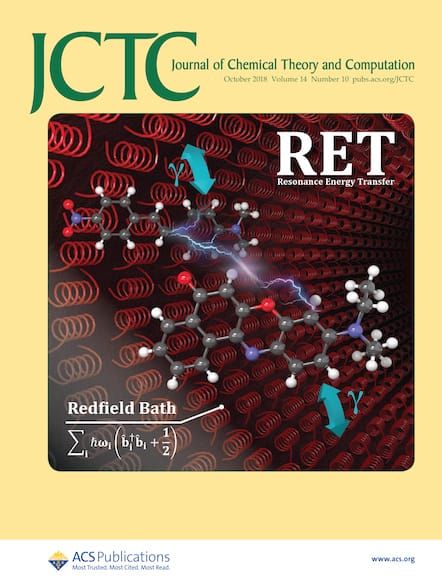Grand-Canonical Equivariant Neural Potentials for Electrochemical Interfaces.
IF 5.5
1区 化学
Q2 CHEMISTRY, PHYSICAL
引用次数: 0
Abstract
Electrochemical reactions under constant potential underpin critical processes in energy storage, catalysis, and corrosion but remain challenging to model owing to the voltage insensitivity of conventional machine learning potentials. The lack of a unified framework incorporating grand-canonical constraints into machine-learned models fundamentally limits accurate, scalable simulations of potential-dependent interfacial phenomena. Here, we present a constant-potential, E(3)-equivariant message-passing neural network (CPMPNN) that integrates grand-canonical electronic structure principles with a global excess-charge parameter that is dynamically redistributed via a multihead attention mechanism. The atomic geometry is encoded through a graph neural network that preserves the full symmetry of the Euclidean group in three dimensions (E(3))─including translations, rotations, and reflections. Benchmarking against the grand-canonical DFT confirms that the CPMPNN retains first-principles accuracy while achieving a three-orders-of-magnitude computational speedup. Applied to key electrocatalytic processes─CO dimerization in CO2 reduction and the Volmer step in hydrogen evolution on Cu(100)─CPMPNN captures how the applied potential modulates the reaction thermodynamics, charge distribution, and transition-state structures, providing mechanistic insight into potential-dependent kinetics. By bridging first-principle accuracy with molecular dynamics scalability, CPMPNN provides a transferable framework for operando modeling of electrified interfaces, enabling new mechanistic insights into potential-controlled electrocatalysis.电化学界面的大规范等变神经电位。
恒定电位下的电化学反应是储能、催化和腐蚀等关键过程的基础,但由于传统机器学习电位对电压不敏感,对其建模仍然具有挑战性。缺乏将大规范约束纳入机器学习模型的统一框架,从根本上限制了对依赖电位的界面现象的准确、可扩展的模拟。在这里,我们提出了一个恒定电位,E(3)-等变消息传递神经网络(CPMPNN),它将大规范电子结构原理与通过多头注意机制动态重新分配的全局多余电荷参数集成在一起。原子几何是通过图形神经网络编码的,该网络在三维空间(E(3))中保持欧几里得群的完全对称性──包括平移、旋转和反射。针对大规范DFT的基准测试证实,CPMPNN在实现三个数量级的计算加速的同时保持了第一性原理的准确性。应用于关键的电催化过程──CO2还原过程中的CO二聚化和Cu(100)上析氢的Volmer步骤──CPMPNN捕捉到了应用电位如何调节反应热力学、电荷分布和过渡态结构,为依赖电位的动力学提供了机理见解。通过将第一性原理的准确性与分子动力学的可扩展性相结合,CPMPNN为带电界面的操作模型提供了一个可转移的框架,从而实现了对电位控制电催化的新机理见解。
本文章由计算机程序翻译,如有差异,请以英文原文为准。
求助全文
约1分钟内获得全文
求助全文
来源期刊

Journal of Chemical Theory and Computation
化学-物理:原子、分子和化学物理
CiteScore
9.90
自引率
16.40%
发文量
568
审稿时长
1 months
期刊介绍:
The Journal of Chemical Theory and Computation invites new and original contributions with the understanding that, if accepted, they will not be published elsewhere. Papers reporting new theories, methodology, and/or important applications in quantum electronic structure, molecular dynamics, and statistical mechanics are appropriate for submission to this Journal. Specific topics include advances in or applications of ab initio quantum mechanics, density functional theory, design and properties of new materials, surface science, Monte Carlo simulations, solvation models, QM/MM calculations, biomolecular structure prediction, and molecular dynamics in the broadest sense including gas-phase dynamics, ab initio dynamics, biomolecular dynamics, and protein folding. The Journal does not consider papers that are straightforward applications of known methods including DFT and molecular dynamics. The Journal favors submissions that include advances in theory or methodology with applications to compelling problems.
 求助内容:
求助内容: 应助结果提醒方式:
应助结果提醒方式:


